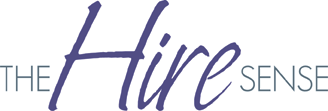Relying on the interview, benchmarking top performers, cloning yourself…these are all common mistakes that lead to bad sales hires. These 9 mistakes are provided by ManageSmarter.com’s article:
Mistake 1:Relying only on interviews to evaluate a candidate
Mistake 2: Using successful people as models
Mistake 3: Too many criteria
Mistake 4: Evaluating “personality” instead of job skills
Mistake 5: Using yourself as an example
Mistake 6: Failure to use statistically validated testing to predict job skills most critical to success
Mistake 7: Not researching the reasons that people fail
Mistake 8: Relying on general “good guy” criteria
Mistake 9: Bypassing the reference check
That is a solid list of common mistakes. You can learn more about each one by reading the entire article. I want to zero in on Mistake 2. From the article (emphasis mine):
Duplicating success may seem like a good idea, but the reasons people succeed are not clear from just measuring the characteristics of top performers. More important are the differences between top performers and low achievers. For example, a comprehensive study of more than 1,000 sales superstars from 70 companies showed that the top three characteristics shared by high achievers were (1) the belief that salesmanship required strong objection-answering skills, (2) good grooming habits, and (3) conservative dress€”especially black shoes. Oddly, a study of the weakest performers at those same companies revealed that the same three characteristics were their most common traits as well.
We ran a similar test on a large sales team years ago and found a similar result. Another factor is a simple one – no two people are the same. The better bet is to identify top traits, skills and motivations and then hire to those factors. This means that the salesperson could have a completely different style, approach and experience. They can still be successful, they will just go about it in a different manner.
Sometimes this difference is too much for hiring managers which leads to this mistake. I have seen the hiring manager then reduce his or her decision to the salesperson’s style. That could be Mistake 10 in this list.
 We’re working through some commission plans with our customers and one of the plans has a function to where the salesperson has to clear a certain quarterly revenue level before the commission plan kicks in. This approach is somewhat common and has its merits. Personally, I am not a fan of it for one reason.
We’re working through some commission plans with our customers and one of the plans has a function to where the salesperson has to clear a certain quarterly revenue level before the commission plan kicks in. This approach is somewhat common and has its merits. Personally, I am not a fan of it for one reason.






